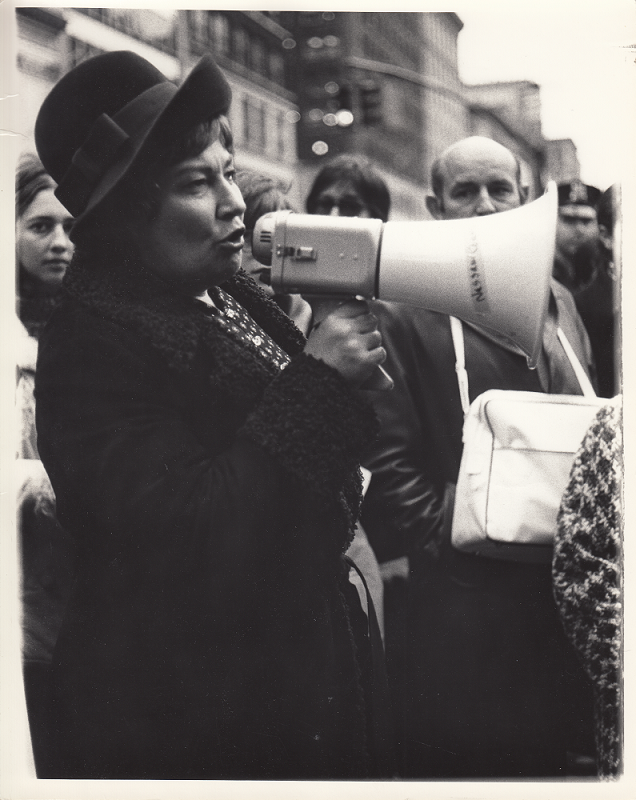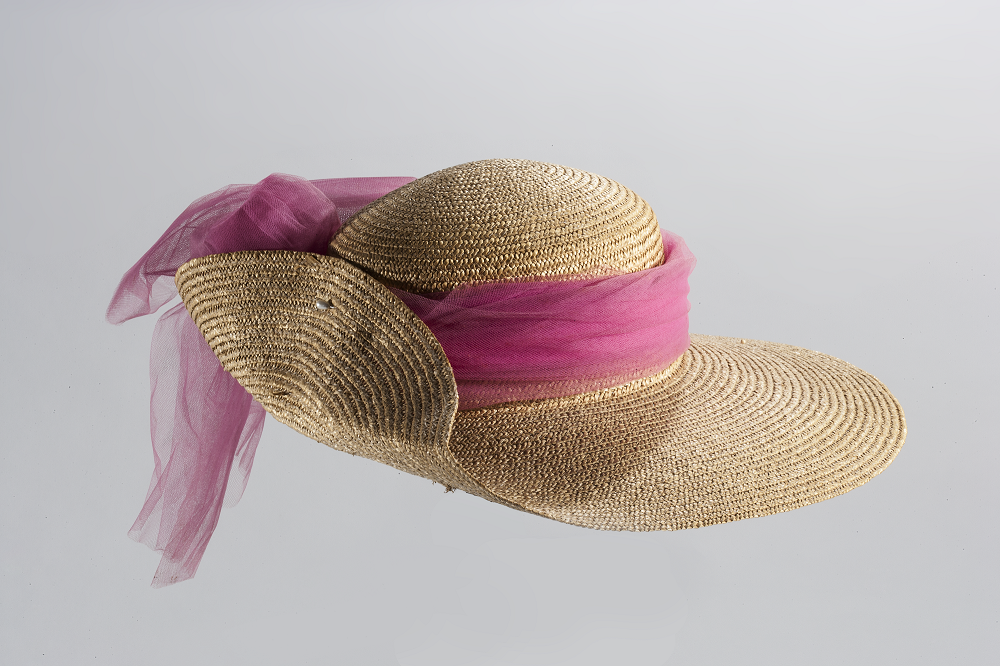
Bella started her law career as many do, in law school. She was one of the few female law students at the time on a scholarship at Columbia University. In the decades that followed she worked as a lawyer, practicing on the behalf of people she called "on the outside of power". Consequently her clients were often people of color or citizens deemed "communist" by the government. All of this civil rights work lead her to become a strong activist. In 1961 she cofounded Women Strike for Peace as a way to fight back against American involvement in Vietnam. Bella always said that she felt she was more of an activist than a politician.

Looking at her campaign while running for Congress, it is clear that Bella was breaking gender barriers from the start. Her slogan was literally "This woman's place is in the House…the House of Representatives!" This is a play on the fact that for so long a womans place in society was her house. Women were expected to stay at home and take care of the house while men worked. For so long this created a dynamic in which women had to rely on their husbands for money and could not get a job. But Bella is seen challenging that idea by placing herself in one of the most male dominated fields, politics.
When Bella was 50 years old she ran for congress, in winning she became one of only twelve congresswoman at the time. Everything from her campaign slogan to the bills she put forth were with the intention for social justice and equality. Bella fought hard against the House seniority system that kept newly elected Representatives, such as her self, from having strong influence. Despite this she still made her voice heard by supporting controversial causes such as ending the Vietnam war. Her blazing political nature earned her the nickname "Battling Bella" as she was constantly challenging those who she thought corrupt. One of her most notable contributions was her coauthoring of the Child Development act with her fellow Congresswoman Shirly Chisholm. This law was just as important for women as it was for children as Bella said, "Without adequate, low-cost day care facilities, women are doomed to occupy low-paying, low-prestige jobs; without day care, women must remain economic serfs." Her comment on this highlights how prevalent gender status was in the in the lives of so many women. Often females were expected to stay and home and rely on their husbands to provide for them. The Child Development act allowed women to have more career opportunities outside of their maternal duties. Bella wanted to make her mark in American politics and what better way to do that than to run for an all male senate. She did end up losing but only by about 1%. After, she was named co-chair of the National Advisory Committee on Women in 1978, but was fired shortly after. Bella's tenacity and passion shone through in everything that she did, and is what made her such an important part of the second feminist movement.

Bella's fiery and charismatic nature naturally drew a lot of media attention to her. The press would often complain that she was "too irritating and brash" to be an effective congresswoman. Or they would marvel at the idea of a woman in politics in the first place. But what ever they said, it was clear that Bella was making her mark on the world. One of the best examples of this her feature on the cover of Life magazine. There are certain choices made by the magazine company. The first thing that stands out is the striking photo of Bella Abzug on the front cover. She is frozen in an expression that seems to be mid sentence; with a passionate and angry look on her face. This represents the strong will that she became so famous for. The text to the left of her face tells us that even though the article might not be solely about Bella, she is still the one chosen to represent "women in politics". The questions below highlight how jarring it was to see women in politics, so much so that they felt the need to question "How they are doing?" and if they would be successful.
Bella worked closely with Betty Friedan and other women to form the National Women's Political Caucus or NWPC. Their aim was to create a organization where women felt encouraged to engage in politics, regardless of political beliefs. They knew how much women had been shut out of the political sphere and wanted to change that. NWPC grew to be over 300 members and during that time the number of women running for office hit record levels. By providing a safe space for women, Bella Abzug and Betty Friedan changed the political landscape. It sparked a new political movement, one in which women had more representation.
At a NWPC convention in 1984, Bella can be heard discussing gender gaps and inequality. Hearing Bella's voice through this recording is powerful because it allows to connect with her on a new level. You can read all your want about Bella but actually getting to hear her speak and listen to the emotion and inflections in her voice is something that is hard to replace.
Bella always made sure to include all women in feminist journey. She introduced legislation trying to increase gay rights, proposing to amend the Civil Rights Act of 1964 to end discrimination against people based on their sexual preference. She was the first member of Congress to work for LGBTQ rights. In her work planning the National Women's conference of 1977, Bella made sure to include women from "all walks of life" to ensure an equal representation. This conference turned out to be massively productive with the result being a draft policy plan that included the ratification of the ERA, LGBTQ women's rights, and safe and legal abortions.
Bella was not met without challenge as many men, and sometimes conservative women, apposed her ideas. During the same time as the 1977 National Women's conference, some conservative women heald their own rally a few miles away in protest of legal abortion and the ERA. This rally gained large amounts of support throughout the country making it difficult for President Carter to enact the platform presented by Bella and the IWY Commission. The pressure faced by the president to stomp out the liberal feminist agenda eventually lead to Bella being fired from her co-chair position.


Bella's wide-brim hat was an important symbol of her presence and can be seen atop her head in almost all photos of her. She had chosen to wear it because she believed that it was the only way men would take her seriously or pay her any attention. This alone speaks volumes about the societal expectations of the time and the ways in which women were expected to look and dress for the male gaze. Inorder to even have a hope of being respected she needed to conform to society. In the picture of one of her hats you can see how this reality is present. The pink ribbon around the hat is symbolic of classic femininity and adds to the image of women-hood.
Bella wrote multiple books throughout her life, one of which was Gender Gap: Bella Abzug's Guide to Political Power for American Women. This book was powerful in many ways but especially in depicting her struggles to go to law school. In the book she says, "Everyone told me that if I wanted to be accepted as a lawyer, I should go to the best law school, but when I applied to Harvard, I received a letter stating that it did not admit women." The fact that one of the most prestigious law schools in the country turned her away simply because of her gender speaks volumes to the social climate of the time. In 1940s America, women were still fighting for equal education opportunities. Her rejection from Harvard only fueled Bella's ambition to advocate for women's rights as a lawyer.

Inorder to bring more of a feminist presence to the UN, Bella established the Women US fund and Women's Environment and Development Organization. These groups advocated for bringing female issues to the UN's attention.